-
MARKET FACTOR ANALYSIS
-
\r\n5.1. Value chain Analysis
-
\r\n5.2. Porter's Five Forces Analysis
-
\r\n5.2.1.
-
Bargaining Power of Suppliers
-
\r\n5.2.2.
-
Bargaining Power of Buyers
-
\r\n5.2.3. Threat
-
of New Entrants
-
\r\n5.2.4. Threat of Substitutes
-
\r\n5.2.5. Intensity of Rivalry
-
\r\n5.3. COVID-19 Impact Analysis
-
\r\n5.3.1.
-
Market Impact Analysis
-
\r\n5.3.2. Regional
-
Impact
-
\r\n5.3.3. Opportunity and Threat
-
Analysis
-
\r\n
-
\r\n
-
\r\n
-
\r\n6. SMART PACKAGING MARKET, BY TECHNOLOGY (USD BILLION)
-
\r\n6.1. Active Packaging
-
\r\n6.2. Intelligent
-
Packaging
-
\r\n6.3. Modified Atmosphere Packaging
-
\r\n6.4. Biodegradable Packaging
-
\r\n7.
-
SMART PACKAGING MARKET, BY APPLICATION (USD BILLION)
-
\r\n7.1.
-
Food and Beverages
-
\r\n7.2. Pharmaceuticals
-
\r\n7.3. Cosmetics
-
\r\n7.4. Electronics
-
\r\n8. SMART PACKAGING MARKET, BY END USE (USD
-
BILLION)
-
\r\n8.1. Retail
-
\r\n8.2. E-commerce
-
\r\n8.3. Supply Chain
-
\r\n9.
-
SMART PACKAGING MARKET, BY MATERIAL TYPE (USD BILLION)
-
\r\n9.1.
-
Plastics
-
\r\n9.2. Paper and Paperboard
-
\r\n9.3.
-
Metal
-
\r\n9.4. Glass
-
\r\n10.
-
SMART PACKAGING MARKET, BY REGIONAL (USD BILLION)
-
\r\n10.1. North
-
America
-
\r\n10.1.1. US
-
\r\n10.1.2.
-
Canada
-
\r\n10.2. Europe
-
\r\n10.2.1.
-
Germany
-
\r\n10.2.2. UK
-
\r\n10.2.3. France
-
\r\n10.2.4.
-
Russia
-
\r\n10.2.5. Italy
-
\r\n10.2.6. Spain
-
\r\n10.2.7.
-
Rest of Europe
-
\r\n10.3. APAC
-
\r\n10.3.1. China
-
\r\n10.3.2.
-
India
-
\r\n10.3.3. Japan
-
\r\n10.3.4. South Korea
-
\r\n10.3.5.
-
Malaysia
-
\r\n10.3.6. Thailand
-
\r\n10.3.7. Indonesia
-
\r\n10.3.8.
-
Rest of APAC
-
\r\n10.4. South America
-
\r\n10.4.1. Brazil
-
\r\n10.4.2.
-
Mexico
-
\r\n10.4.3. Argentina
-
\r\n10.4.4. Rest of South America
-
\r\n10.5. MEA
-
\r\n10.5.1. GCC Countries
-
\r\n10.5.2. South Africa
-
\r\n10.5.3. Rest of MEA
-
\r\n
-
\r\n
-
\r\n
-
\r\n11. COMPETITIVE LANDSCAPE
-
\r\n11.1. Overview
-
\r\n11.2. Competitive Analysis
-
\r\n11.3.
-
Market share Analysis
-
\r\n11.4. Major Growth Strategy
-
in the Smart Packaging Market
-
\r\n11.5. Competitive Benchmarking
-
\r\n11.6. Leading Players in Terms of Number of Developments
-
in the Smart Packaging Market
-
\r\n11.7. Key developments
-
and growth strategies
-
\r\n11.7.1. New Product Launch/Service
-
Deployment
-
\r\n11.7.2. Merger & Acquisitions
-
\r\n11.7.3. Joint Ventures
-
\r\n11.8. Major Players Financial Matrix
-
\r\n11.8.1.
-
Sales and Operating Income
-
\r\n11.8.2. Major
-
Players R&D Expenditure. 2023
-
\r\n12.
-
COMPANY PROFILES
-
\r\n12.1. SIG Combibloc
-
\r\n12.1.1.
-
Financial Overview
-
\r\n12.1.2. Products
-
Offered
-
\r\n12.1.3. Key Developments
-
\r\n12.1.4. SWOT Analysis
-
\r\n12.1.5. Key Strategies
-
\r\n12.2. Avery Dennison
-
\r\n12.2.1. Financial Overview
-
\r\n12.2.2. Products Offered
-
\r\n12.2.3. Key Developments
-
\r\n12.2.4.
-
SWOT Analysis
-
\r\n12.2.5. Key Strategies
-
\r\n12.3. WestRock
-
\r\n12.3.1.
-
Financial Overview
-
\r\n12.3.2. Products
-
Offered
-
\r\n12.3.3. Key Developments
-
\r\n12.3.4. SWOT Analysis
-
\r\n12.3.5. Key Strategies
-
\r\n12.4. Sealed Air Corporation
-
\r\n12.4.1. Financial
-
Overview
-
\r\n12.4.2. Products Offered
-
\r\n12.4.3. Key Developments
-
\r\n12.4.4. SWOT Analysis
-
\r\n12.4.5.
-
Key Strategies
-
\r\n12.5. MettlerToledo
-
International
-
\r\n12.5.1. Financial Overview
-
\r\n12.5.2. Products Offered
-
\r\n12.5.3.
-
Key Developments
-
\r\n12.5.4. SWOT Analysis
-
\r\n12.5.5. Key Strategies
-
\r\n12.6. Thinfilm Electronics
-
\r\n12.6.1.
-
Financial Overview
-
\r\n12.6.2. Products
-
Offered
-
\r\n12.6.3. Key Developments
-
\r\n12.6.4. SWOT Analysis
-
\r\n12.6.5. Key Strategies
-
\r\n12.7. Waters Corporation
-
\r\n12.7.1. Financial
-
Overview
-
\r\n12.7.2. Products Offered
-
\r\n12.7.3. Key Developments
-
\r\n12.7.4. SWOT Analysis
-
\r\n12.7.5.
-
Key Strategies
-
\r\n12.8. Amcor
-
\r\n12.8.1. Financial Overview
-
\r\n12.8.2.
-
Products Offered
-
\r\n12.8.3. Key Developments
-
\r\n12.8.4. SWOT Analysis
-
\r\n12.8.5. Key Strategies
-
\r\n12.9. Tetra Pak
-
\r\n12.9.1. Financial Overview
-
\r\n12.9.2. Products Offered
-
\r\n12.9.3. Key Developments
-
\r\n12.9.4.
-
SWOT Analysis
-
\r\n12.9.5. Key Strategies
-
\r\n12.10. Smartrac
-
\r\n12.10.1.
-
Financial Overview
-
\r\n12.10.2. Products
-
Offered
-
\r\n12.10.3. Key Developments
-
\r\n12.10.4. SWOT Analysis
-
\r\n12.10.5. Key Strategies
-
\r\n12.11. Checkpoint Systems
-
\r\n12.11.1. Financial
-
Overview
-
\r\n12.11.2. Products Offered
-
\r\n12.11.3. Key Developments
-
\r\n12.11.4. SWOT Analysis
-
\r\n12.11.5.
-
Key Strategies
-
\r\n12.12. Zebra Technologies
-
\r\n12.12.1. Financial Overview
-
\r\n12.12.2.
-
Products Offered
-
\r\n12.12.3. Key Developments
-
\r\n12.12.4. SWOT Analysis
-
\r\n12.12.5. Key Strategies
-
\r\n12.13. Huhtamaki
-
\r\n12.13.1. Financial Overview
-
\r\n12.13.2. Products Offered
-
\r\n12.13.3. Key Developments
-
\r\n12.13.4.
-
SWOT Analysis
-
\r\n12.13.5. Key Strategies
-
\r\n12.14. Sonoco Products Company
-
\r\n12.14.1. Financial Overview
-
\r\n12.14.2.
-
Products Offered
-
\r\n12.14.3. Key Developments
-
\r\n12.14.4. SWOT Analysis
-
\r\n12.14.5. Key Strategies
-
\r\n12.15. Transparent Path
-
\r\n12.15.1. Financial
-
Overview
-
\r\n12.15.2. Products Offered
-
\r\n12.15.3. Key Developments
-
\r\n12.15.4. SWOT Analysis
-
\r\n12.15.5.
-
Key Strategies
-
\r\n13.
-
APPENDIX
-
\r\n13.1. References
-
\r\n13.2.
-
Related Reports
-
\r\nLIST OF TABLES
-
\r\n
-
\r\nTABLE
-
LIST OF ASSUMPTIONS
-
\r\nTABLE 2. NORTH AMERICA SMART PACKAGING
-
MARKET SIZE ESTIMATES & FORECAST, BY TECHNOLOGY, 2019-2035 (USD BILLIONS)
-
\r\nTABLE 3. NORTH AMERICA SMART PACKAGING MARKET SIZE ESTIMATES &
-
FORECAST, BY APPLICATION, 2019-2035 (USD BILLIONS)
-
\r\nTABLE
-
NORTH AMERICA SMART PACKAGING MARKET SIZE ESTIMATES & FORECAST, BY END USE,
-
\r\nTABLE 5. NORTH AMERICA SMART PACKAGING
-
MARKET SIZE ESTIMATES & FORECAST, BY MATERIAL TYPE, 2019-2035 (USD BILLIONS)
-
\r\nTABLE 6. NORTH AMERICA SMART PACKAGING MARKET SIZE ESTIMATES &
-
FORECAST, BY REGIONAL, 2019-2035 (USD BILLIONS)
-
\r\nTABLE 7.
-
US SMART PACKAGING MARKET SIZE ESTIMATES & FORECAST, BY TECHNOLOGY, 2019-2035
-
(USD BILLIONS)
-
\r\nTABLE 8. US SMART PACKAGING MARKET SIZE ESTIMATES
-
& FORECAST, BY APPLICATION, 2019-2035 (USD BILLIONS)
-
\r\nTABLE
-
US SMART PACKAGING MARKET SIZE ESTIMATES & FORECAST, BY END USE, 2019-2035
-
(USD BILLIONS)
-
\r\nTABLE 10. US SMART PACKAGING MARKET SIZE ESTIMATES
-
& FORECAST, BY MATERIAL TYPE, 2019-2035 (USD BILLIONS)
-
\r\nTABLE
-
US SMART PACKAGING MARKET SIZE ESTIMATES & FORECAST, BY REGIONAL, 2019-2035
-
(USD BILLIONS)
-
\r\nTABLE 12. CANADA SMART PACKAGING MARKET SIZE
-
ESTIMATES & FORECAST, BY TECHNOLOGY, 2019-2035 (USD BILLIONS)
-
\r\nTABLE
-
CANADA SMART PACKAGING MARKET SIZE ESTIMATES & FORECAST, BY APPLICATION,
-
\r\nTABLE 14. CANADA SMART PACKAGING
-
MARKET SIZE ESTIMATES & FORECAST, BY END USE, 2019-2035 (USD BILLIONS)
-
\r\nTABLE 15. CANADA SMART PACKAGING MARKET SIZE ESTIMATES & FORECAST,
-
BY MATERIAL TYPE, 2019-2035 (USD BILLIONS)
-
\r\nTABLE 16. CANADA
-
SMART PACKAGING MARKET SIZE ESTIMATES & FORECAST, BY REGIONAL, 2019-2035 (USD
-
BILLIONS)
-
\r\nTABLE 17. EUROPE SMART PACKAGING MARKET SIZE ESTIMATES
-
& FORECAST, BY TECHNOLOGY, 2019-2035 (USD BILLIONS)
-
\r\nTABLE
-
EUROPE SMART PACKAGING MARKET SIZE ESTIMATES & FORECAST, BY APPLICATION,
-
\r\nTABLE 19. EUROPE SMART PACKAGING
-
MARKET SIZE ESTIMATES & FORECAST, BY END USE, 2019-2035 (USD BILLIONS)
-
\r\nTABLE 20. EUROPE SMART PACKAGING MARKET SIZE ESTIMATES & FORECAST,
-
BY MATERIAL TYPE, 2019-2035 (USD BILLIONS)
-
\r\nTABLE 21. EUROPE
-
SMART PACKAGING MARKET SIZE ESTIMATES & FORECAST, BY REGIONAL, 2019-2035 (USD
-
BILLIONS)
-
\r\nTABLE 22. GERMANY SMART PACKAGING MARKET SIZE ESTIMATES
-
& FORECAST, BY TECHNOLOGY, 2019-2035 (USD BILLIONS)
-
\r\nTABLE
-
GERMANY SMART PACKAGING MARKET SIZE ESTIMATES & FORECAST, BY APPLICATION,
-
\r\nTABLE 24. GERMANY SMART PACKAGING
-
MARKET SIZE ESTIMATES & FORECAST, BY END USE, 2019-2035 (USD BILLIONS)
-
\r\nTABLE 25. GERMANY SMART PACKAGING MARKET SIZE ESTIMATES & FORECAST,
-
BY MATERIAL TYPE, 2019-2035 (USD BILLIONS)
-
\r\nTABLE 26. GERMANY
-
SMART PACKAGING MARKET SIZE ESTIMATES & FORECAST, BY REGIONAL, 2019-2035 (USD
-
BILLIONS)
-
\r\nTABLE 27. UK SMART PACKAGING MARKET SIZE ESTIMATES
-
& FORECAST, BY TECHNOLOGY, 2019-2035 (USD BILLIONS)
-
\r\nTABLE
-
UK SMART PACKAGING MARKET SIZE ESTIMATES & FORECAST, BY APPLICATION, 2019-2035
-
(USD BILLIONS)
-
\r\nTABLE 29. UK SMART PACKAGING MARKET SIZE ESTIMATES
-
& FORECAST, BY END USE, 2019-2035 (USD BILLIONS)
-
\r\nTABLE
-
UK SMART PACKAGING MARKET SIZE ESTIMATES & FORECAST, BY MATERIAL TYPE, 2019-2035
-
(USD BILLIONS)
-
\r\nTABLE 31. UK SMART PACKAGING MARKET SIZE ESTIMATES
-
& FORECAST, BY REGIONAL, 2019-2035 (USD BILLIONS)
-
\r\nTABLE
-
FRANCE SMART PACKAGING MARKET SIZE ESTIMATES & FORECAST, BY TECHNOLOGY,
-
\r\nTABLE 33. FRANCE SMART PACKAGING
-
MARKET SIZE ESTIMATES & FORECAST, BY APPLICATION, 2019-2035 (USD BILLIONS)
-
\r\nTABLE 34. FRANCE SMART PACKAGING MARKET SIZE ESTIMATES & FORECAST,
-
BY END USE, 2019-2035 (USD BILLIONS)
-
\r\nTABLE 35. FRANCE SMART
-
PACKAGING MARKET SIZE ESTIMATES & FORECAST, BY MATERIAL TYPE, 2019-2035 (USD
-
BILLIONS)
-
\r\nTABLE 36. FRANCE SMART PACKAGING MARKET SIZE ESTIMATES
-
& FORECAST, BY REGIONAL, 2019-2035 (USD BILLIONS)
-
\r\nTABLE
-
RUSSIA SMART PACKAGING MARKET SIZE ESTIMATES & FORECAST, BY TECHNOLOGY,
-
\r\nTABLE 38. RUSSIA SMART PACKAGING
-
MARKET SIZE ESTIMATES & FORECAST, BY APPLICATION, 2019-2035 (USD BILLIONS)
-
\r\nTABLE 39. RUSSIA SMART PACKAGING MARKET SIZE ESTIMATES & FORECAST,
-
BY END USE, 2019-2035 (USD BILLIONS)
-
\r\nTABLE 40. RUSSIA SMART
-
PACKAGING MARKET SIZE ESTIMATES & FORECAST, BY MATERIAL TYPE, 2019-2035 (USD
-
BILLIONS)
-
\r\nTABLE 41. RUSSIA SMART PACKAGING MARKET SIZE ESTIMATES
-
& FORECAST, BY REGIONAL, 2019-2035 (USD BILLIONS)
-
\r\nTABLE
-
ITALY SMART PACKAGING MARKET SIZE ESTIMATES & FORECAST, BY TECHNOLOGY, 2019-2035
-
(USD BILLIONS)
-
\r\nTABLE 43. ITALY SMART PACKAGING MARKET SIZE
-
ESTIMATES & FORECAST, BY APPLICATION, 2019-2035 (USD BILLIONS)
-
\r\nTABLE
-
ITALY SMART PACKAGING MARKET SIZE ESTIMATES & FORECAST, BY END USE, 2019-2035
-
(USD BILLIONS)
-
\r\nTABLE 45. ITALY SMART PACKAGING MARKET SIZE
-
ESTIMATES & FORECAST, BY MATERIAL TYPE, 2019-2035 (USD BILLIONS)
-
\r\nTABLE
-
ITALY SMART PACKAGING MARKET SIZE ESTIMATES & FORECAST, BY REGIONAL, 2019-2035
-
(USD BILLIONS)
-
\r\nTABLE 47. SPAIN SMART PACKAGING MARKET SIZE
-
ESTIMATES & FORECAST, BY TECHNOLOGY, 2019-2035 (USD BILLIONS)
-
\r\nTABLE
-
SPAIN SMART PACKAGING MARKET SIZE ESTIMATES & FORECAST, BY APPLICATION,
-
\r\nTABLE 49. SPAIN SMART PACKAGING
-
MARKET SIZE ESTIMATES & FORECAST, BY END USE, 2019-2035 (USD BILLIONS)
-
\r\nTABLE 50. SPAIN SMART PACKAGING MARKET SIZE ESTIMATES & FORECAST,
-
BY MATERIAL TYPE, 2019-2035 (USD BILLIONS)
-
\r\nTABLE 51. SPAIN
-
SMART PACKAGING MARKET SIZE ESTIMATES & FORECAST, BY REGIONAL, 2019-2035 (USD
-
BILLIONS)
-
\r\nTABLE 52. REST OF EUROPE SMART PACKAGING MARKET
-
SIZE ESTIMATES & FORECAST, BY TECHNOLOGY, 2019-2035 (USD BILLIONS)
-
\r\nTABLE
-
REST OF EUROPE SMART PACKAGING MARKET SIZE ESTIMATES & FORECAST, BY APPLICATION,
-
\r\nTABLE 54. REST OF EUROPE SMART PACKAGING
-
MARKET SIZE ESTIMATES & FORECAST, BY END USE, 2019-2035 (USD BILLIONS)
-
\r\nTABLE 55. REST OF EUROPE SMART PACKAGING MARKET SIZE ESTIMATES
-
& FORECAST, BY MATERIAL TYPE, 2019-2035 (USD BILLIONS)
-
\r\nTABLE
-
REST OF EUROPE SMART PACKAGING MARKET SIZE ESTIMATES & FORECAST, BY REGIONAL,
-
\r\nTABLE 57. APAC SMART PACKAGING MARKET
-
SIZE ESTIMATES & FORECAST, BY TECHNOLOGY, 2019-2035 (USD BILLIONS)
-
\r\nTABLE
-
APAC SMART PACKAGING MARKET SIZE ESTIMATES & FORECAST, BY APPLICATION, 2019-2035
-
(USD BILLIONS)
-
\r\nTABLE 59. APAC SMART PACKAGING MARKET SIZE
-
ESTIMATES & FORECAST, BY END USE, 2019-2035 (USD BILLIONS)
-
\r\nTABLE
-
APAC SMART PACKAGING MARKET SIZE ESTIMATES & FORECAST, BY MATERIAL TYPE,
-
\r\nTABLE 61. APAC SMART PACKAGING MARKET
-
SIZE ESTIMATES & FORECAST, BY REGIONAL, 2019-2035 (USD BILLIONS)
-
\r\nTABLE
-
CHINA SMART PACKAGING MARKET SIZE ESTIMATES & FORECAST, BY TECHNOLOGY, 2019-2035
-
(USD BILLIONS)
-
\r\nTABLE 63. CHINA SMART PACKAGING MARKET SIZE
-
ESTIMATES & FORECAST, BY APPLICATION, 2019-2035 (USD BILLIONS)
-
\r\nTABLE
-
CHINA SMART PACKAGING MARKET SIZE ESTIMATES & FORECAST, BY END USE, 2019-2035
-
(USD BILLIONS)
-
\r\nTABLE 65. CHINA SMART PACKAGING MARKET SIZE
-
ESTIMATES & FORECAST, BY MATERIAL TYPE, 2019-2035 (USD BILLIONS)
-
\r\nTABLE
-
CHINA SMART PACKAGING MARKET SIZE ESTIMATES & FORECAST, BY REGIONAL, 2019-2035
-
(USD BILLIONS)
-
\r\nTABLE 67. INDIA SMART PACKAGING MARKET SIZE
-
ESTIMATES & FORECAST, BY TECHNOLOGY, 2019-2035 (USD BILLIONS)
-
\r\nTABLE
-
INDIA SMART PACKAGING MARKET SIZE ESTIMATES & FORECAST, BY APPLICATION,
-
\r\nTABLE 69. INDIA SMART PACKAGING
-
MARKET SIZE ESTIMATES & FORECAST, BY END USE, 2019-2035 (USD BILLIONS)
-
\r\nTABLE 70. INDIA SMART PACKAGING MARKET SIZE ESTIMATES & FORECAST,
-
BY MATERIAL TYPE, 2019-2035 (USD BILLIONS)
-
\r\nTABLE 71. INDIA
-
SMART PACKAGING MARKET SIZE ESTIMATES & FORECAST, BY REGIONAL, 2019-2035 (USD
-
BILLIONS)
-
\r\nTABLE 72. JAPAN SMART PACKAGING MARKET SIZE ESTIMATES
-
& FORECAST, BY TECHNOLOGY, 2019-2035 (USD BILLIONS)
-
\r\nTABLE
-
JAPAN SMART PACKAGING MARKET SIZE ESTIMATES & FORECAST, BY APPLICATION,
-
\r\nTABLE 74. JAPAN SMART PACKAGING
-
MARKET SIZE ESTIMATES & FORECAST, BY END USE, 2019-2035 (USD BILLIONS)
-
\r\nTABLE 75. JAPAN SMART PACKAGING MARKET SIZE ESTIMATES & FORECAST,
-
BY MATERIAL TYPE, 2019-2035 (USD BILLIONS)
-
\r\nTABLE 76. JAPAN
-
SMART PACKAGING MARKET SIZE ESTIMATES & FORECAST, BY REGIONAL, 2019-2035 (USD
-
BILLIONS)
-
\r\nTABLE 77. SOUTH KOREA SMART PACKAGING MARKET SIZE
-
ESTIMATES & FORECAST, BY TECHNOLOGY, 2019-2035 (USD BILLIONS)
-
\r\nTABLE
-
SOUTH KOREA SMART PACKAGING MARKET SIZE ESTIMATES & FORECAST, BY APPLICATION,
-
\r\nTABLE 79. SOUTH KOREA SMART PACKAGING
-
MARKET SIZE ESTIMATES & FORECAST, BY END USE, 2019-2035 (USD BILLIONS)
-
\r\nTABLE 80. SOUTH KOREA SMART PACKAGING MARKET SIZE ESTIMATES &
-
FORECAST, BY MATERIAL TYPE, 2019-2035 (USD BILLIONS)
-
\r\nTABLE
-
SOUTH KOREA SMART PACKAGING MARKET SIZE ESTIMATES & FORECAST, BY REGIONAL,
-
\r\nTABLE 82. MALAYSIA SMART PACKAGING
-
MARKET SIZE ESTIMATES & FORECAST, BY TECHNOLOGY, 2019-2035 (USD BILLIONS)
-
\r\nTABLE 83. MALAYSIA SMART PACKAGING MARKET SIZE ESTIMATES &
-
FORECAST, BY APPLICATION, 2019-2035 (USD BILLIONS)
-
\r\nTABLE
-
MALAYSIA SMART PACKAGING MARKET SIZE ESTIMATES & FORECAST, BY END USE, 2019-2035
-
(USD BILLIONS)
-
\r\nTABLE 85. MALAYSIA SMART PACKAGING MARKET
-
SIZE ESTIMATES & FORECAST, BY MATERIAL TYPE, 2019-2035 (USD BILLIONS)
-
\r\nTABLE 86. MALAYSIA SMART PACKAGING MARKET SIZE ESTIMATES &
-
FORECAST, BY REGIONAL, 2019-2035 (USD BILLIONS)
-
\r\nTABLE 87.
-
THAILAND SMART PACKAGING MARKET SIZE ESTIMATES & FORECAST, BY TECHNOLOGY, 2019-2035
-
(USD BILLIONS)
-
\r\nTABLE 88. THAILAND SMART PACKAGING MARKET
-
SIZE ESTIMATES & FORECAST, BY APPLICATION, 2019-2035 (USD BILLIONS)
-
\r\nTABLE
-
THAILAND SMART PACKAGING MARKET SIZE ESTIMATES & FORECAST, BY END USE, 2019-2035
-
(USD BILLIONS)
-
\r\nTABLE 90. THAILAND SMART PACKAGING MARKET
-
SIZE ESTIMATES & FORECAST, BY MATERIAL TYPE, 2019-2035 (USD BILLIONS)
-
\r\nTABLE 91. THAILAND SMART PACKAGING MARKET SIZE ESTIMATES &
-
FORECAST, BY REGIONAL, 2019-2035 (USD BILLIONS)
-
\r\nTABLE 92.
-
INDONESIA SMART PACKAGING MARKET SIZE ESTIMATES & FORECAST, BY TECHNOLOGY, 2019-2035
-
(USD BILLIONS)
-
\r\nTABLE 93. INDONESIA SMART PACKAGING MARKET
-
SIZE ESTIMATES & FORECAST, BY APPLICATION, 2019-2035 (USD BILLIONS)
-
\r\nTABLE
-
INDONESIA SMART PACKAGING MARKET SIZE ESTIMATES & FORECAST, BY END USE,
-
\r\nTABLE 95. INDONESIA SMART PACKAGING
-
MARKET SIZE ESTIMATES & FORECAST, BY MATERIAL TYPE, 2019-2035 (USD BILLIONS)
-
\r\nTABLE 96. INDONESIA SMART PACKAGING MARKET SIZE ESTIMATES &
-
FORECAST, BY REGIONAL, 2019-2035 (USD BILLIONS)
-
\r\nTABLE 97.
-
REST OF APAC SMART PACKAGING MARKET SIZE ESTIMATES & FORECAST, BY TECHNOLOGY,
-
\r\nTABLE 98. REST OF APAC SMART PACKAGING
-
MARKET SIZE ESTIMATES & FORECAST, BY APPLICATION, 2019-2035 (USD BILLIONS)
-
\r\nTABLE 99. REST OF APAC SMART PACKAGING MARKET SIZE ESTIMATES &
-
FORECAST, BY END USE, 2019-2035 (USD BILLIONS)
-
\r\nTABLE 100.
-
REST OF APAC SMART PACKAGING MARKET SIZE ESTIMATES & FORECAST, BY MATERIAL TYPE,
-
\r\nTABLE 101. REST OF APAC SMART PACKAGING
-
MARKET SIZE ESTIMATES & FORECAST, BY REGIONAL, 2019-2035 (USD BILLIONS)
-
\r\nTABLE 102. SOUTH AMERICA SMART PACKAGING MARKET SIZE ESTIMATES
-
& FORECAST, BY TECHNOLOGY, 2019-2035 (USD BILLIONS)
-
\r\nTABLE
-
SOUTH AMERICA SMART PACKAGING MARKET SIZE ESTIMATES & FORECAST, BY APPLICATION,
-
\r\nTABLE 104. SOUTH AMERICA SMART PACKAGING
-
MARKET SIZE ESTIMATES & FORECAST, BY END USE, 2019-2035 (USD BILLIONS)
-
\r\nTABLE 105. SOUTH AMERICA SMART PACKAGING MARKET SIZE ESTIMATES
-
& FORECAST, BY MATERIAL TYPE, 2019-2035 (USD BILLIONS)
-
\r\nTABLE
-
SOUTH AMERICA SMART PACKAGING MARKET SIZE ESTIMATES & FORECAST, BY REGIONAL,
-
\r\nTABLE 107. BRAZIL SMART PACKAGING
-
MARKET SIZE ESTIMATES & FORECAST, BY TECHNOLOGY, 2019-2035 (USD BILLIONS)
-
\r\nTABLE 108. BRAZIL SMART PACKAGING MARKET SIZE ESTIMATES & FORECAST,
-
BY APPLICATION, 2019-2035 (USD BILLIONS)
-
\r\nTABLE 109. BRAZIL
-
SMART PACKAGING MARKET SIZE ESTIMATES & FORECAST, BY END USE, 2019-2035 (USD
-
BILLIONS)
-
\r\nTABLE 110. BRAZIL SMART PACKAGING MARKET SIZE ESTIMATES
-
& FORECAST, BY MATERIAL TYPE, 2019-2035 (USD BILLIONS)
-
\r\nTABLE
-
BRAZIL SMART PACKAGING MARKET SIZE ESTIMATES & FORECAST, BY REGIONAL, 2019-2035
-
(USD BILLIONS)
-
\r\nTABLE 112. MEXICO SMART PACKAGING MARKET SIZE
-
ESTIMATES & FORECAST, BY TECHNOLOGY, 2019-2035 (USD BILLIONS)
-
\r\nTABLE
-
MEXICO SMART PACKAGING MARKET SIZE ESTIMATES & FORECAST, BY APPLICATION,
-
\r\nTABLE 114. MEXICO SMART PACKAGING
-
MARKET SIZE ESTIMATES & FORECAST, BY END USE, 2019-2035 (USD BILLIONS)
-
\r\nTABLE 115. MEXICO SMART PACKAGING MARKET SIZE ESTIMATES & FORECAST,
-
BY MATERIAL TYPE, 2019-2035 (USD BILLIONS)
-
\r\nTABLE 116. MEXICO
-
SMART PACKAGING MARKET SIZE ESTIMATES & FORECAST, BY REGIONAL, 2019-2035 (USD
-
BILLIONS)
-
\r\nTABLE 117. ARGENTINA SMART PACKAGING MARKET SIZE
-
ESTIMATES & FORECAST, BY TECHNOLOGY, 2019-2035 (USD BILLIONS)
-
\r\nTABLE
-
ARGENTINA SMART PACKAGING MARKET SIZE ESTIMATES & FORECAST, BY APPLICATION,
-
\r\nTABLE 119. ARGENTINA SMART PACKAGING
-
MARKET SIZE ESTIMATES & FORECAST, BY END USE, 2019-2035 (USD BILLIONS)
-
\r\nTABLE 120. ARGENTINA SMART PACKAGING MARKET SIZE ESTIMATES &
-
FORECAST, BY MATERIAL TYPE, 2019-2035 (USD BILLIONS)
-
\r\nTABLE
-
ARGENTINA SMART PACKAGING MARKET SIZE ESTIMATES & FORECAST, BY REGIONAL,
-
\r\nTABLE 122. REST OF SOUTH AMERICA
-
SMART PACKAGING MARKET SIZE ESTIMATES & FORECAST, BY TECHNOLOGY, 2019-2035 (USD
-
BILLIONS)
-
\r\nTABLE 123. REST OF SOUTH AMERICA SMART PACKAGING
-
MARKET SIZE ESTIMATES & FORECAST, BY APPLICATION, 2019-2035 (USD BILLIONS)
-
\r\nTABLE 124. REST OF SOUTH AMERICA SMART PACKAGING MARKET SIZE ESTIMATES
-
& FORECAST, BY END USE, 2019-2035 (USD BILLIONS)
-
\r\nTABLE
-
REST OF SOUTH AMERICA SMART PACKAGING MARKET SIZE ESTIMATES & FORECAST,
-
BY MATERIAL TYPE, 2019-2035 (USD BILLIONS)
-
\r\nTABLE 126. REST
-
OF SOUTH AMERICA SMART PACKAGING MARKET SIZE ESTIMATES & FORECAST, BY REGIONAL,
-
\r\nTABLE 127. MEA SMART PACKAGING MARKET
-
SIZE ESTIMATES & FORECAST, BY TECHNOLOGY, 2019-2035 (USD BILLIONS)
-
\r\nTABLE
-
MEA SMART PACKAGING MARKET SIZE ESTIMATES & FORECAST, BY APPLICATION, 2019-2035
-
(USD BILLIONS)
-
\r\nTABLE 129. MEA SMART PACKAGING MARKET SIZE
-
ESTIMATES & FORECAST, BY END USE, 2019-2035 (USD BILLIONS)
-
\r\nTABLE
-
MEA SMART PACKAGING MARKET SIZE ESTIMATES & FORECAST, BY MATERIAL TYPE,
-
\r\nTABLE 131. MEA SMART PACKAGING MARKET
-
SIZE ESTIMATES & FORECAST, BY REGIONAL, 2019-2035 (USD BILLIONS)
-
\r\nTABLE
-
GCC COUNTRIES SMART PACKAGING MARKET SIZE ESTIMATES & FORECAST, BY TECHNOLOGY,
-
\r\nTABLE 133. GCC COUNTRIES SMART PACKAGING
-
MARKET SIZE ESTIMATES & FORECAST, BY APPLICATION, 2019-2035 (USD BILLIONS)
-
\r\nTABLE 134. GCC COUNTRIES SMART PACKAGING MARKET SIZE ESTIMATES
-
& FORECAST, BY END USE, 2019-2035 (USD BILLIONS)
-
\r\nTABLE
-
GCC COUNTRIES SMART PACKAGING MARKET SIZE ESTIMATES & FORECAST, BY MATERIAL
-
TYPE, 2019-2035 (USD BILLIONS)
-
\r\nTABLE 136. GCC COUNTRIES SMART
-
PACKAGING MARKET SIZE ESTIMATES & FORECAST, BY REGIONAL, 2019-2035 (USD BILLIONS)
-
\r\nTABLE 137. SOUTH AFRICA SMART PACKAGING MARKET SIZE ESTIMATES &
-
FORECAST, BY TECHNOLOGY, 2019-2035 (USD BILLIONS)
-
\r\nTABLE 138.
-
SOUTH AFRICA SMART PACKAGING MARKET SIZE ESTIMATES & FORECAST, BY APPLICATION,
-
\r\nTABLE 139. SOUTH AFRICA SMART PACKAGING
-
MARKET SIZE ESTIMATES & FORECAST, BY END USE, 2019-2035 (USD BILLIONS)
-
\r\nTABLE 140. SOUTH AFRICA SMART PACKAGING MARKET SIZE ESTIMATES &
-
FORECAST, BY MATERIAL TYPE, 2019-2035 (USD BILLIONS)
-
\r\nTABLE
-
SOUTH AFRICA SMART PACKAGING MARKET SIZE ESTIMATES & FORECAST, BY REGIONAL,
-
\r\nTABLE 142. REST OF MEA SMART PACKAGING
-
MARKET SIZE ESTIMATES & FORECAST, BY TECHNOLOGY, 2019-2035 (USD BILLIONS)
-
\r\nTABLE 143. REST OF MEA SMART PACKAGING MARKET SIZE ESTIMATES &
-
FORECAST, BY APPLICATION, 2019-2035 (USD BILLIONS)
-
\r\nTABLE
-
REST OF MEA SMART PACKAGING MARKET SIZE ESTIMATES & FORECAST, BY END USE,
-
\r\nTABLE 145. REST OF MEA SMART PACKAGING
-
MARKET SIZE ESTIMATES & FORECAST, BY MATERIAL TYPE, 2019-2035 (USD BILLIONS)
-
\r\nTABLE 146. REST OF MEA SMART PACKAGING MARKET SIZE ESTIMATES &
-
FORECAST, BY REGIONAL, 2019-2035 (USD BILLIONS)
-
\r\nTABLE 147.
-
PRODUCT LAUNCH/PRODUCT DEVELOPMENT/APPROVAL
-
\r\nTABLE 148. ACQUISITION/PARTNERSHIP
-
\r\n
-
\r\n
-
\r\n
-
\r\n
-
\r\n
-
\r\n
-
\r\n
-
\r\n
-
\r\n
-
\r\n
-
\r\n
-
\r\n
-
\r\n
-
\r\n
-
\r\n
-
\r\n
-
\r\n
-
\r\n
-
\r\n
-
\r\n
-
\r\n
-
\r\n
-
\r\n
-
\r\n
-
\r\n
-
\r\n
-
\r\n
-
\r\n
-
\r\n
-
\r\nLIST
-
OF FIGURES
-
\r\n
-
\r\nFIGURE 1. MARKET SYNOPSIS
-
\r\nFIGURE
-
NORTH AMERICA SMART PACKAGING MARKET ANALYSIS
-
\r\nFIGURE 3. US SMART
-
PACKAGING MARKET ANALYSIS BY TECHNOLOGY
-
\r\nFIGURE 4. US SMART PACKAGING
-
MARKET ANALYSIS BY APPLICATION
-
\r\nFIGURE 5. US SMART PACKAGING MARKET
-
ANALYSIS BY END USE
-
\r\nFIGURE 6. US SMART PACKAGING MARKET ANALYSIS
-
BY MATERIAL TYPE
-
\r\nFIGURE 7. US SMART PACKAGING MARKET ANALYSIS BY
-
REGIONAL
-
\r\nFIGURE 8. CANADA SMART PACKAGING MARKET ANALYSIS BY TECHNOLOGY
-
\r\nFIGURE
-
CANADA SMART PACKAGING MARKET ANALYSIS BY APPLICATION
-
\r\nFIGURE
-
CANADA SMART PACKAGING MARKET ANALYSIS BY END USE
-
\r\nFIGURE 11.
-
CANADA SMART PACKAGING MARKET ANALYSIS BY MATERIAL TYPE
-
\r\nFIGURE 12.
-
CANADA SMART PACKAGING MARKET ANALYSIS BY REGIONAL
-
\r\nFIGURE 13. EUROPE
-
SMART PACKAGING MARKET ANALYSIS
-
\r\nFIGURE 14. GERMANY SMART PACKAGING
-
MARKET ANALYSIS BY TECHNOLOGY
-
\r\nFIGURE 15. GERMANY SMART PACKAGING
-
MARKET ANALYSIS BY APPLICATION
-
\r\nFIGURE 16. GERMANY SMART PACKAGING
-
MARKET ANALYSIS BY END USE
-
\r\nFIGURE 17. GERMANY SMART PACKAGING MARKET
-
ANALYSIS BY MATERIAL TYPE
-
\r\nFIGURE 18. GERMANY SMART PACKAGING MARKET
-
ANALYSIS BY REGIONAL
-
\r\nFIGURE 19. UK SMART PACKAGING MARKET ANALYSIS
-
BY TECHNOLOGY
-
\r\nFIGURE 20. UK SMART PACKAGING MARKET ANALYSIS BY APPLICATION
-
\r\nFIGURE
-
UK SMART PACKAGING MARKET ANALYSIS BY END USE
-
\r\nFIGURE 22. UK
-
SMART PACKAGING MARKET ANALYSIS BY MATERIAL TYPE
-
\r\nFIGURE 23. UK SMART
-
PACKAGING MARKET ANALYSIS BY REGIONAL
-
\r\nFIGURE 24. FRANCE SMART PACKAGING
-
MARKET ANALYSIS BY TECHNOLOGY
-
\r\nFIGURE 25. FRANCE SMART PACKAGING
-
MARKET ANALYSIS BY APPLICATION
-
\r\nFIGURE 26. FRANCE SMART PACKAGING
-
MARKET ANALYSIS BY END USE
-
\r\nFIGURE 27. FRANCE SMART PACKAGING MARKET
-
ANALYSIS BY MATERIAL TYPE
-
\r\nFIGURE 28. FRANCE SMART PACKAGING MARKET
-
ANALYSIS BY REGIONAL
-
\r\nFIGURE 29. RUSSIA SMART PACKAGING MARKET ANALYSIS
-
BY TECHNOLOGY
-
\r\nFIGURE 30. RUSSIA SMART PACKAGING MARKET ANALYSIS
-
BY APPLICATION
-
\r\nFIGURE 31. RUSSIA SMART PACKAGING MARKET ANALYSIS
-
BY END USE
-
\r\nFIGURE 32. RUSSIA SMART PACKAGING MARKET ANALYSIS BY
-
MATERIAL TYPE
-
\r\nFIGURE 33. RUSSIA SMART PACKAGING MARKET ANALYSIS
-
BY REGIONAL
-
\r\nFIGURE 34. ITALY SMART PACKAGING MARKET ANALYSIS BY
-
TECHNOLOGY
-
\r\nFIGURE 35. ITALY SMART PACKAGING MARKET ANALYSIS BY APPLICATION
-
\r\nFIGURE
-
ITALY SMART PACKAGING MARKET ANALYSIS BY END USE
-
\r\nFIGURE 37.
-
ITALY SMART PACKAGING MARKET ANALYSIS BY MATERIAL TYPE
-
\r\nFIGURE 38.
-
ITALY SMART PACKAGING MARKET ANALYSIS BY REGIONAL
-
\r\nFIGURE 39. SPAIN
-
SMART PACKAGING MARKET ANALYSIS BY TECHNOLOGY
-
\r\nFIGURE 40. SPAIN SMART
-
PACKAGING MARKET ANALYSIS BY APPLICATION
-
\r\nFIGURE 41. SPAIN SMART
-
PACKAGING MARKET ANALYSIS BY END USE
-
\r\nFIGURE 42. SPAIN SMART PACKAGING
-
MARKET ANALYSIS BY MATERIAL TYPE
-
\r\nFIGURE 43. SPAIN SMART PACKAGING
-
MARKET ANALYSIS BY REGIONAL
-
\r\nFIGURE 44. REST OF EUROPE SMART PACKAGING
-
MARKET ANALYSIS BY TECHNOLOGY
-
\r\nFIGURE 45. REST OF EUROPE SMART PACKAGING
-
MARKET ANALYSIS BY APPLICATION
-
\r\nFIGURE 46. REST OF EUROPE SMART PACKAGING
-
MARKET ANALYSIS BY END USE
-
\r\nFIGURE 47. REST OF EUROPE SMART PACKAGING
-
MARKET ANALYSIS BY MATERIAL TYPE
-
\r\nFIGURE 48. REST OF EUROPE SMART
-
PACKAGING MARKET ANALYSIS BY REGIONAL
-
\r\nFIGURE 49. APAC SMART PACKAGING
-
MARKET ANALYSIS
-
\r\nFIGURE 50. CHINA SMART PACKAGING MARKET ANALYSIS
-
BY TECHNOLOGY
-
\r\nFIGURE 51. CHINA SMART PACKAGING MARKET ANALYSIS BY
-
APPLICATION
-
\r\nFIGURE 52. CHINA SMART PACKAGING MARKET ANALYSIS BY
-
END USE
-
\r\nFIGURE 53. CHINA SMART PACKAGING MARKET ANALYSIS BY MATERIAL
-
TYPE
-
\r\nFIGURE 54. CHINA SMART PACKAGING MARKET ANALYSIS BY REGIONAL
-
\r\nFIGURE
-
INDIA SMART PACKAGING MARKET ANALYSIS BY TECHNOLOGY
-
\r\nFIGURE 56.
-
INDIA SMART PACKAGING MARKET ANALYSIS BY APPLICATION
-
\r\nFIGURE 57.
-
INDIA SMART PACKAGING MARKET ANALYSIS BY END USE
-
\r\nFIGURE 58. INDIA
-
SMART PACKAGING MARKET ANALYSIS BY MATERIAL TYPE
-
\r\nFIGURE 59. INDIA
-
SMART PACKAGING MARKET ANALYSIS BY REGIONAL
-
\r\nFIGURE 60. JAPAN SMART
-
PACKAGING MARKET ANALYSIS BY TECHNOLOGY
-
\r\nFIGURE 61. JAPAN SMART PACKAGING
-
MARKET ANALYSIS BY APPLICATION
-
\r\nFIGURE 62. JAPAN SMART PACKAGING
-
MARKET ANALYSIS BY END USE
-
\r\nFIGURE 63. JAPAN SMART PACKAGING MARKET
-
ANALYSIS BY MATERIAL TYPE
-
\r\nFIGURE 64. JAPAN SMART PACKAGING MARKET
-
ANALYSIS BY REGIONAL
-
\r\nFIGURE 65. SOUTH KOREA SMART PACKAGING MARKET
-
ANALYSIS BY TECHNOLOGY
-
\r\nFIGURE 66. SOUTH KOREA SMART PACKAGING MARKET
-
ANALYSIS BY APPLICATION
-
\r\nFIGURE 67. SOUTH KOREA SMART PACKAGING MARKET
-
ANALYSIS BY END USE
-
\r\nFIGURE 68. SOUTH KOREA SMART PACKAGING MARKET
-
ANALYSIS BY MATERIAL TYPE
-
\r\nFIGURE 69. SOUTH KOREA SMART PACKAGING
-
MARKET ANALYSIS BY REGIONAL
-
\r\nFIGURE 70. MALAYSIA SMART PACKAGING
-
MARKET ANALYSIS BY TECHNOLOGY
-
\r\nFIGURE 71. MALAYSIA SMART PACKAGING
-
MARKET ANALYSIS BY APPLICATION
-
\r\nFIGURE 72. MALAYSIA SMART PACKAGING
-
MARKET ANALYSIS BY END USE
-
\r\nFIGURE 73. MALAYSIA SMART PACKAGING MARKET
-
ANALYSIS BY MATERIAL TYPE
-
\r\nFIGURE 74. MALAYSIA SMART PACKAGING MARKET
-
ANALYSIS BY REGIONAL
-
\r\nFIGURE 75. THAILAND SMART PACKAGING MARKET
-
ANALYSIS BY TECHNOLOGY
-
\r\nFIGURE 76. THAILAND SMART PACKAGING MARKET
-
ANALYSIS BY APPLICATION
-
\r\nFIGURE 77. THAILAND SMART PACKAGING MARKET
-
ANALYSIS BY END USE
-
\r\nFIGURE 78. THAILAND SMART PACKAGING MARKET ANALYSIS
-
BY MATERIAL TYPE
-
\r\nFIGURE 79. THAILAND SMART PACKAGING MARKET ANALYSIS
-
BY REGIONAL
-
\r\nFIGURE 80. INDONESIA SMART PACKAGING MARKET ANALYSIS
-
BY TECHNOLOGY
-
\r\nFIGURE 81. INDONESIA SMART PACKAGING MARKET ANALYSIS
-
BY APPLICATION
-
\r\nFIGURE 82. INDONESIA SMART PACKAGING MARKET ANALYSIS
-
BY END USE
-
\r\nFIGURE 83. INDONESIA SMART PACKAGING MARKET ANALYSIS
-
BY MATERIAL TYPE
-
\r\nFIGURE 84. INDONESIA SMART PACKAGING MARKET ANALYSIS
-
BY REGIONAL
-
\r\nFIGURE 85. REST OF APAC SMART PACKAGING MARKET ANALYSIS
-
BY TECHNOLOGY
-
\r\nFIGURE 86. REST OF APAC SMART PACKAGING MARKET ANALYSIS
-
BY APPLICATION
-
\r\nFIGURE 87. REST OF APAC SMART PACKAGING MARKET ANALYSIS
-
BY END USE
-
\r\nFIGURE 88. REST OF APAC SMART PACKAGING MARKET ANALYSIS
-
BY MATERIAL TYPE
-
\r\nFIGURE 89. REST OF APAC SMART PACKAGING MARKET
-
ANALYSIS BY REGIONAL
-
\r\nFIGURE 90. SOUTH AMERICA SMART PACKAGING MARKET
-
ANALYSIS
-
\r\nFIGURE 91. BRAZIL SMART PACKAGING MARKET ANALYSIS BY TECHNOLOGY
-
\r\nFIGURE
-
BRAZIL SMART PACKAGING MARKET ANALYSIS BY APPLICATION
-
\r\nFIGURE
-
BRAZIL SMART PACKAGING MARKET ANALYSIS BY END USE
-
\r\nFIGURE 94.
-
BRAZIL SMART PACKAGING MARKET ANALYSIS BY MATERIAL TYPE
-
\r\nFIGURE 95.
-
BRAZIL SMART PACKAGING MARKET ANALYSIS BY REGIONAL
-
\r\nFIGURE 96. MEXICO
-
SMART PACKAGING MARKET ANALYSIS BY TECHNOLOGY
-
\r\nFIGURE 97. MEXICO
-
SMART PACKAGING MARKET ANALYSIS BY APPLICATION
-
\r\nFIGURE 98. MEXICO
-
SMART PACKAGING MARKET ANALYSIS BY END USE
-
\r\nFIGURE 99. MEXICO SMART
-
PACKAGING MARKET ANALYSIS BY MATERIAL TYPE
-
\r\nFIGURE 100. MEXICO SMART
-
PACKAGING MARKET ANALYSIS BY REGIONAL
-
\r\nFIGURE 101. ARGENTINA SMART
-
PACKAGING MARKET ANALYSIS BY TECHNOLOGY
-
\r\nFIGURE 102. ARGENTINA SMART
-
PACKAGING MARKET ANALYSIS BY APPLICATION
-
\r\nFIGURE 103. ARGENTINA SMART
-
PACKAGING MARKET ANALYSIS BY END USE
-
\r\nFIGURE 104. ARGENTINA SMART
-
PACKAGING MARKET ANALYSIS BY MATERIAL TYPE
-
\r\nFIGURE 105. ARGENTINA
-
SMART PACKAGING MARKET ANALYSIS BY REGIONAL
-
\r\nFIGURE 106. REST OF
-
SOUTH AMERICA SMART PACKAGING MARKET ANALYSIS BY TECHNOLOGY
-
\r\nFIGURE
-
REST OF SOUTH AMERICA SMART PACKAGING MARKET ANALYSIS BY APPLICATION
-
\r\nFIGURE
-
REST OF SOUTH AMERICA SMART PACKAGING MARKET ANALYSIS BY END USE
-
\r\nFIGURE
-
REST OF SOUTH AMERICA SMART PACKAGING MARKET ANALYSIS BY MATERIAL TYPE
-
\r\nFIGURE
-
REST OF SOUTH AMERICA SMART PACKAGING MARKET ANALYSIS BY REGIONAL
-
\r\nFIGURE
-
MEA SMART PACKAGING MARKET ANALYSIS
-
\r\nFIGURE 112. GCC COUNTRIES
-
SMART PACKAGING MARKET ANALYSIS BY TECHNOLOGY
-
\r\nFIGURE 113. GCC COUNTRIES
-
SMART PACKAGING MARKET ANALYSIS BY APPLICATION
-
\r\nFIGURE 114. GCC COUNTRIES
-
SMART PACKAGING MARKET ANALYSIS BY END USE
-
\r\nFIGURE 115. GCC COUNTRIES
-
SMART PACKAGING MARKET ANALYSIS BY MATERIAL TYPE
-
\r\nFIGURE 116. GCC
-
COUNTRIES SMART PACKAGING MARKET ANALYSIS BY REGIONAL
-
\r\nFIGURE 117.
-
SOUTH AFRICA SMART PACKAGING MARKET ANALYSIS BY TECHNOLOGY
-
\r\nFIGURE
-
SOUTH AFRICA SMART PACKAGING MARKET ANALYSIS BY APPLICATION
-
\r\nFIGURE
-
SOUTH AFRICA SMART PACKAGING MARKET ANALYSIS BY END USE
-
\r\nFIGURE
-
SOUTH AFRICA SMART PACKAGING MARKET ANALYSIS BY MATERIAL TYPE
-
\r\nFIGURE
-
SOUTH AFRICA SMART PACKAGING MARKET ANALYSIS BY REGIONAL
-
\r\nFIGURE
-
REST OF MEA SMART PACKAGING MARKET ANALYSIS BY TECHNOLOGY
-
\r\nFIGURE
-
REST OF MEA SMART PACKAGING MARKET ANALYSIS BY APPLICATION
-
\r\nFIGURE
-
REST OF MEA SMART PACKAGING MARKET ANALYSIS BY END USE
-
\r\nFIGURE
-
REST OF MEA SMART PACKAGING MARKET ANALYSIS BY MATERIAL TYPE
-
\r\nFIGURE
-
REST OF MEA SMART PACKAGING MARKET ANALYSIS BY REGIONAL
-
\r\nFIGURE
-
KEY BUYING CRITERIA OF SMART PACKAGING MARKET
-
\r\nFIGURE 128. RESEARCH
-
PROCESS OF MRFR
-
\r\nFIGURE 129. DRO ANALYSIS OF SMART PACKAGING MARKET
-
\r\nFIGURE
-
DRIVERS IMPACT ANALYSIS: SMART PACKAGING MARKET
-
\r\nFIGURE 131.
-
RESTRAINTS IMPACT ANALYSIS: SMART PACKAGING MARKET
-
\r\nFIGURE 132. SUPPLY
-
/ VALUE CHAIN: SMART PACKAGING MARKET
-
\r\nFIGURE 133. SMART PACKAGING
-
MARKET, BY TECHNOLOGY, 2025 (% SHARE)
-
\r\nFIGURE 134. SMART PACKAGING
-
MARKET, BY TECHNOLOGY, 2019 TO 2035 (USD Billions)
-
\r\nFIGURE 135. SMART
-
PACKAGING MARKET, BY APPLICATION, 2025 (% SHARE)
-
\r\nFIGURE 136. SMART
-
PACKAGING MARKET, BY APPLICATION, 2019 TO 2035 (USD Billions)
-
\r\nFIGURE
-
SMART PACKAGING MARKET, BY END USE, 2025 (% SHARE)
-
\r\nFIGURE 138.
-
SMART PACKAGING MARKET, BY END USE, 2019 TO 2035 (USD Billions)
-
\r\nFIGURE
-
SMART PACKAGING MARKET, BY MATERIAL TYPE, 2025 (% SHARE)
-
\r\nFIGURE
-
SMART PACKAGING MARKET, BY MATERIAL TYPE, 2019 TO 2035 (USD Billions)
-
\r\nFIGURE
-
SMART PACKAGING MARKET, BY REGIONAL, 2025 (% SHARE)
-
\r\nFIGURE
-
SMART PACKAGING MARKET, BY REGIONAL, 2019 TO 2035 (USD Billions)
-
\r\nFIGURE
-
BENCHMARKING OF MAJOR COMPETITORS
-
\r\n

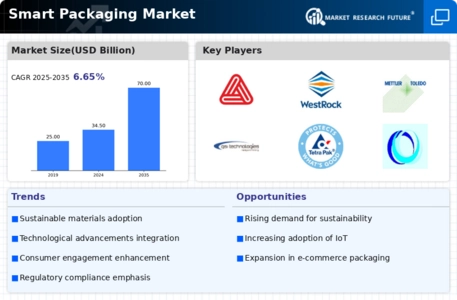
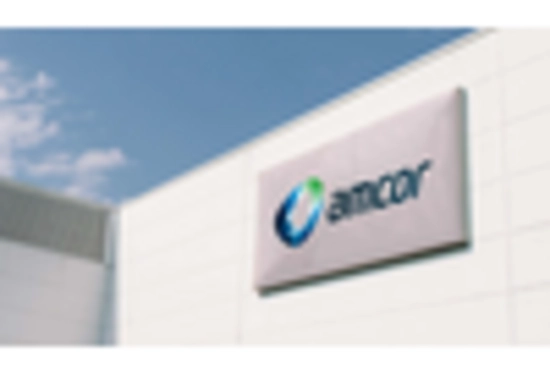
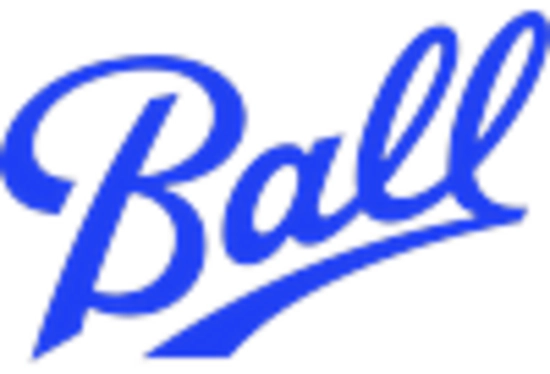
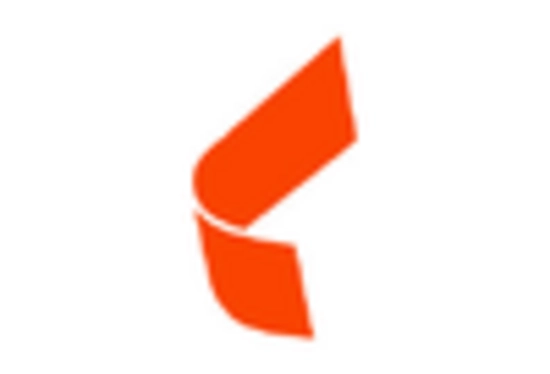
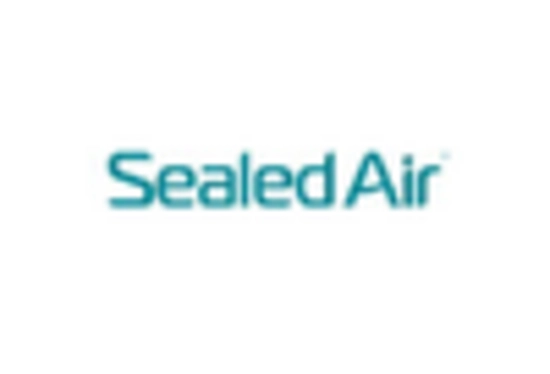
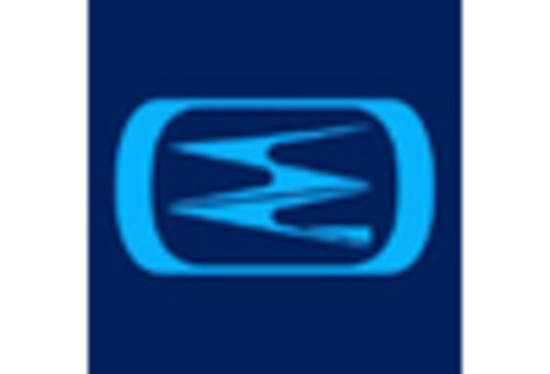
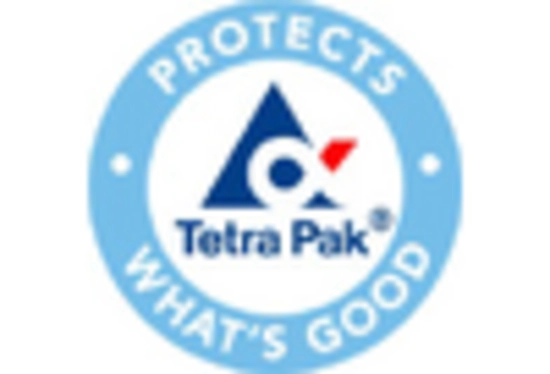

Leave a Comment